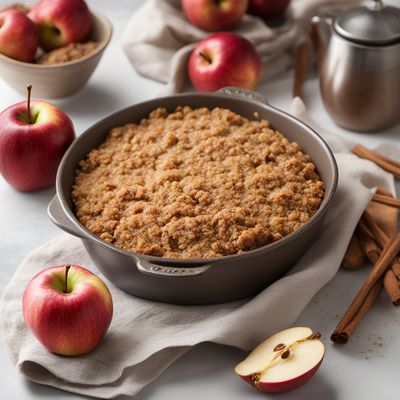
Ingredient
Cinnamon bark
The Fragrant Spice: Cinnamon Bark
Cinnamon bark is derived from the inner bark of trees belonging to the Cinnamomum genus. It is characterized by its reddish-brown color, woody texture, and a sweet, warm aroma. When used in cooking, it imparts a distinctively rich and spicy flavor to various dishes.
Origins and history
Cinnamon bark has a long and fascinating history dating back to ancient Egypt, where it was highly prized and used in embalming rituals. It was later traded along the Silk Road, becoming a valuable commodity in Europe during the Middle Ages. Today, it is primarily sourced from Sri Lanka, Indonesia, and China.
Nutritional information
Cinnamon bark is a good source of manganese and contains small amounts of calcium, iron, and dietary fiber. It is also known for its antioxidant and anti-inflammatory properties.
Allergens
Cinnamon bark may cause allergic reactions in some individuals, particularly those with sensitivities to cinnamon or other spices.
How to select
When selecting cinnamon bark, look for tightly rolled, whole pieces that are free from any signs of mold or moisture. The bark should have a strong, sweet aroma. Opt for organic or sustainably sourced varieties whenever possible.
Storage recommendations
To maintain the freshness and quality of cinnamon bark, store it in an airtight container in a cool, dark place away from direct sunlight. Ground cinnamon bark should be used within six months, while whole bark can last up to a year.
How to produce
Cinnamon trees can be grown in tropical or subtropical regions, requiring well-drained soil and a warm climate. However, they are best suited for commercial cultivation due to their long growth cycle and specific environmental requirements.
Preparation tips
Cinnamon bark can be ground into a fine powder or used in its whole form. It is commonly used in baking, desserts, curries, stews, and beverages such as mulled wine or spiced cider. It pairs well with apples, chocolate, nuts, and warm spices like cloves and nutmeg.
Culinary uses
Cinnamon bark is widely used in various cuisines around the world, including Indian, Middle Eastern, and European dishes. It is a key ingredient in cinnamon rolls, apple pies, chai tea, and Moroccan tagines.
Availability
Cinnamon bark is commonly available in grocery stores, supermarkets, and spice shops worldwide.



